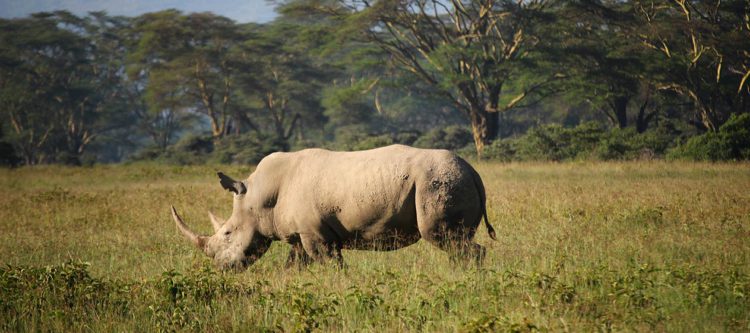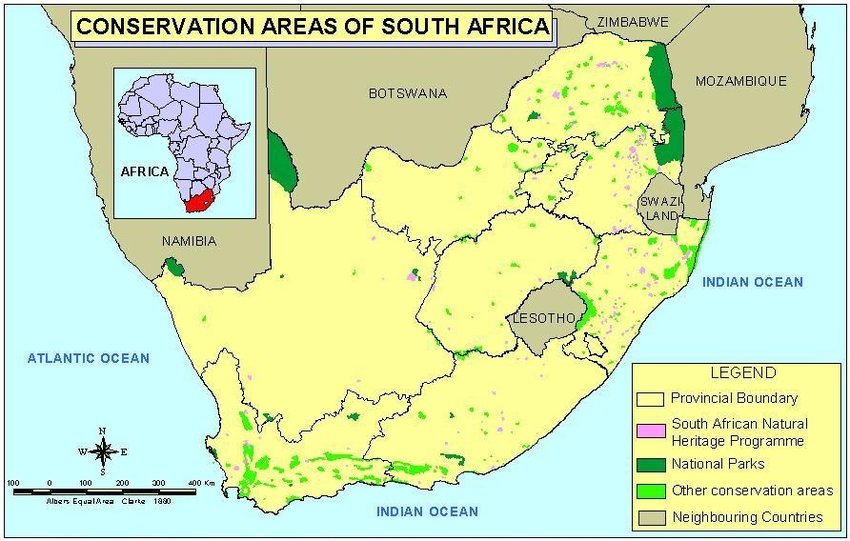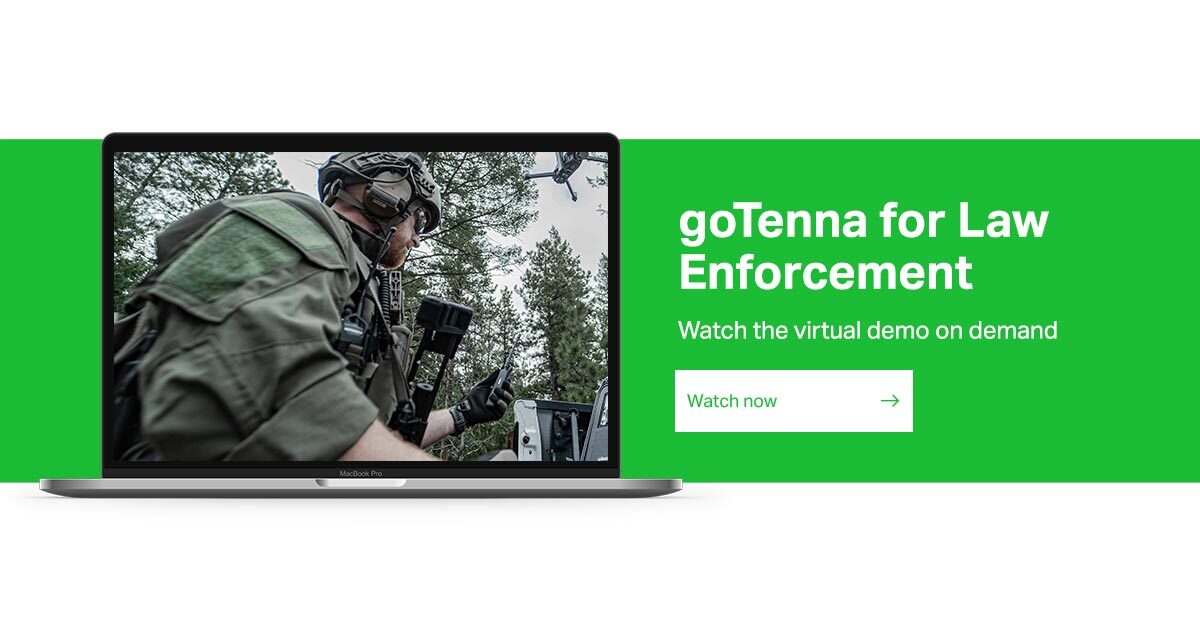Tech Spotlight Series: Powamaxx leverages mobile mesh to protect wildlife and park rangers in Southern Africa


For most people in the United States, the park ranger job doesn’t seem terribly difficult or dangerous. You may have interacted with a park ranger to pay admission and get directions when entering a national park or forest, show you how to spot wildlife or give advice on the best trail to take.
It’s an important job. A perfect job for the most outdoorsy and rugged among us. But, while it certainly has its dangers, it doesn’t seem like a particularly treacherous or deadly job to the average citizen. Unless you’re a park ranger in an African wildlife reserve.
Park rangers in Africa face many more threats than encounters with wild animals and rescuing errant hikers from dangerous terrain. They come face-to-face with heavily-armed poachers on a regular basis – individuals that view the animals that park rangers protect as the key to profit.
To learn more about the dangers that park rangers face in Africa, we recently sat down with Carl Steyn, Programme Manager for TAK-SA and managing director at Powamaxx Special Projects. Carl works with African wildlife reserves and conservation organizations to give them the tools and solutions they need to accomplish their important conservationist missions.
During our conversation, we asked Carl why being a park ranger in Africa is so much more dangerous than being a ranger in other regions of the world, the communication challenges these organizations face when operating in harsh environments, and about the new technologies like goTenna that are helping to keep park rangers in Africa safe while doing a very dangerous job.
The Last Mile (TLM): Can you tell our readers a bit about Powamaxx Special Projects? What does the organization do? What kinds of solutions does it offer, and who does it offer them to?
Carl Steyn: Powamaxx is a specialized solutions company that is focused on legacy change. Our mission is to provide mission-critical, effective Command, Control, Communications, Computers (C4), Intelligence, Surveillance and Reconnaissance (ISR) solutions to organizations that need them.
While we offer products and services to many different industries, our primary focus is on delivering advanced sensors and communications solutions to the wildlife protection industry. We work collaboratively with conservationist organizations and wildlife reserves to leverage technology as a way to overcome their limited manpower and resources and effectively accomplish their missions.
TLM: Those in the U.S. might find it strange that being a park ranger is a dangerous job. What kinds of danger do park rangers in Africa face? How many park rangers are killed in Africa?
Carl Steyn: While there are certainly dangers in being a park ranger all around the globe, park rangers in Africa face a number of risks and threats that aren’t common in other areas. First, there’s the environment in which they operate, which is incredibly harsh, with dangerous wildlife and terrain hazards. Then, there is the risk posed by poachers, which are constantly increasing in number and sophistication.
Today, poachers leverage advanced tactics and weaponry that effectively put African park rangers on the front lines of a war. All told, more than 1,000 park rangers have lost their lives in the last decade in Southern Africa.
Poachers engage in illegal and incredibly brutal activities for their own personal profit. They’re often armed with high powered and fully-automatic weaponry, and have a network of individuals and criminal organizations that support and assist them in these activities. This means that the rangers in Africa are fighting a war against an enemy with sophisticated resources and weaponry at their disposal.
One of the most frightening aspects of the job for park rangers is that the risk doesn’t end when their shift ends. Many rangers find their families and themselves at risk when they’re off-duty. Since many poachers live in the same communities as park rangers and know who the park rangers are, it’s not uncommon for there to be assassination attempts against rangers and their families.
All of this is further exacerbated by legal and resource challenges. For example, in Southern Africa, fully-automatic weapons can only be carried by police and military personnel. Since poachers don’t follow these laws, that dramatically escalates the threat level.
TLM: Why is this such a problem in Africa, in particular? What about Southern Africa makes it a hotbed for violence against park rangers?
Carl Steyn: Much of what we see in Southern Africa is a result of rewards outweighing risks. There is extreme poverty and economic stress in these regions that drive people to engage in illegal activities to provide for themselves and their families. Conversely, poachers often don’t face severe repercussions for their actions.
It sounds cynical, but it’s often easier and less risky to kill a park ranger or law enforcement professional than the risk of keeping them alive. Because of failing judicial systems and lack of resources, poachers often are better armed and better equipped than park rangers, and the consequences are not great enough to outweigh the economic benefits of their actions.
TLM: What is the environment like where these park rangers operate? Are these remote locations? Is the environment particularly harsh or austere in any way?
Carl Steyn: Park rangers in southern Africa face some of the harshest, most austere environments that you could possibly imagine. Aside from dealing with well-equipped, heavily-armed poachers, they have to deal with an extreme environment filled with dangerous wildlife and life-threatening conditions.

Almost all of the areas where these park rangers operate feature harsh terrain ranging from bushveld, to mountains, to deserts, to jungle. All of this harsh terrain and territory is coupled with extreme climates and unpredictable weather.
TLM: What are communications like in these places? Are there existing terrestrial networks? Is satellite an option for them?
Carl Steyn: Communications have historically been one of the largest challenges in Africa – and that continues to this day. There are simply no existing terrestrial networks that are comprehensive and advanced enough to offer connectivity across the entire area in which park rangers need to operate. The terrestrial networks that do exist are simply not established or far-reaching enough, leaving large dead zones with no connectivity.
TLM: Why is mobile mesh a good solution for communications and situational awareness for African park rangers? What about mobile mesh makes it particularly useful in these environments and for this use case?
Carl Steyn: As we discussed, communication is one of the largest challenges that park rangers and wildlife conservation groups face in Southern Africa. Mesh can reduce these challenges by offering an alternative for basic communications, connectivity, and situational awareness where terrestrial networks simply aren’t available.
Mesh networking enables real-time coordination and connectivity capabilities even in locations where terrestrial networks are unavailable, and satellite services may be denied. Mesh networking devices have been tested in many challenging environments – including dense jungles and thick canopies – and can still deliver basic communications services coupled with the geospatial command and control of ATAK.
Mobile mesh is truly a game-changing technology that can provide an effective communications and connectivity backbone and infrastructure for wildlife conservation organizations across Southern Africa.
TLM: What capabilities are park rangers and their larger agencies using mobile mesh networking for? Is it just communications and situational awareness, or is it also being used for data backhaul and powering IoT initiatives?
Carl Steyn: Right now, we’re mostly leveraging mobile mesh networking for basic communications, connectivity, and situational awareness capabilities in pilot deployments across Southern Africa. However, we anticipate using the technology for all of these use cases in the future – including as a data backhaul solution for IoT deployments.
We’re very excited to keep testing and accessing the technology and its capabilities in Southern Africa. There are countless potential use cases for the technology – all of which could be revolutionary for wildlife conservation organizations.
TLM: How does mobile mesh make the job safer for park rangers? Why are they safer when they’re carrying a mobile mesh radio than when they’re not carrying one?
Carl Steyn: Connectivity and communications are essential for running coordinated operations. But they’re also essential for basic requirements like calling for assistance, medical attention, or backup and support. Being able to pick up a mobile device and ask for assistance is taken for granted across much of the globe, but it’s simply not possible in many of the locations and environments where park rangers operate in Southern Africa.
Mobile mesh gives park rangers that capability – among others.
It enables real-time situational awareness, coordination, accurate command and control, and always-available communications. This enables park rangers to be situationally aware, adaptable, communicative and supported by their whole team.
TLM: Why has Powamaxx chosen to partner with goTenna? What about goTenna’s solution and the company -itself – made you decide to become a channel partner in Africa?
Carl Steyn: The GoTenna solution speaks for itself. It’s widely considered the gold standard mobile mesh networking solution, and that made it an easy choice for Powamaxx.
As an organization, we’re honored to work with GoTenna on a common goal – to create a solution that will leave a legacy in Southern Africa and wildlife conservation.





No Comment